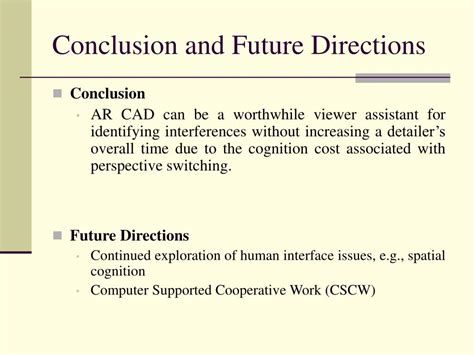Intro
Discover key Clonidine facts, including its uses, side effects, and interactions, to understand this medications role in treating ADHD, hypertension, and anxiety disorders, with insights into its mechanisms, benefits, and risks.
Clonidine is a medication that has been used for several decades to treat various health conditions, including high blood pressure, attention deficit hyperactivity disorder (ADHD), and certain pain disorders. Despite its widespread use, many people are not familiar with the details of this medication. In this article, we will delve into the world of clonidine, exploring its history, mechanisms of action, benefits, and potential side effects. Whether you are a healthcare professional, a patient, or simply someone interested in learning more about this medication, you will find valuable information in the following paragraphs.
Clonidine has been available since the 1960s, initially used as a treatment for hypertension. Over time, its applications have expanded to include other conditions, showcasing its versatility as a therapeutic agent. The medication works by stimulating certain receptors in the brain, which in turn leads to a decrease in blood pressure and an improvement in symptoms associated with ADHD and other conditions. Understanding how clonidine works is crucial for appreciating its effects and potential interactions with other medications. As we explore the various aspects of clonidine, it becomes clear that this medication plays a significant role in managing a range of health issues.
The importance of clonidine lies in its ability to provide relief for patients suffering from conditions that significantly impact their quality of life. For individuals with hypertension, clonidine can help reduce the risk of heart disease and stroke by lowering blood pressure. For those with ADHD, it can improve focus and attention, leading to better performance in school or at work. Additionally, clonidine's use in pain management highlights its potential as a multifaceted treatment option. As we continue to explore the facts about clonidine, we will discuss its benefits, potential side effects, and the steps involved in its administration, providing a comprehensive overview of this valuable medication.
Introduction to Clonidine

History and Development
The development of clonidine dates back to the 1960s, when it was first synthesized and tested as a potential antihypertensive agent. Initial trials showed promising results, leading to its approval for use in treating high blood pressure. Over the years, further research has expanded its indications to include ADHD and certain pain conditions. The evolution of clonidine's use is a testament to the ongoing efforts in medical research to find new applications for existing medications, thereby improving patient outcomes.Benefits of Clonidine

Working Mechanism
The working mechanism of clonidine involves the stimulation of alpha-2 adrenergic receptors in the brain, which leads to a decrease in the release of norepinephrine, a neurotransmitter involved in the body's fight-or-flight response. This decrease results in lowered blood pressure, heart rate, and peripheral resistance. In the context of ADHD, the exact mechanism is less clear, but it is believed that clonidine's action on the prefrontal cortex improves attention and reduces impulsivity. Understanding the mechanism of action is crucial for predicting potential interactions with other medications and for managing side effects.Potential Side Effects

Administration and Dosage
The administration and dosage of clonidine depend on the condition being treated and the form of the medication. For hypertension, clonidine is typically started at a low dose and gradually increased until the desired effect is achieved. For ADHD, the dosage may vary, but it is often administered in divided doses throughout the day. The patches are changed weekly and provide a steady release of the medication, which can be beneficial for patients who have difficulty remembering to take their medication. The key to effective administration is finding the right balance between therapeutic effect and minimizing side effects.Interactions and Precautions

Special Considerations
Special considerations are necessary when prescribing clonidine to certain patient populations. In children, the medication should be used with caution, as the risk of side effects may be higher. In patients with renal impairment, dosage adjustments may be necessary to avoid accumulation of the drug. Furthermore, clonidine should be used with caution in patients with a history of heart disease, as it can affect heart rate and blood pressure. These considerations highlight the importance of individualized treatment plans when using clonidine.Conclusion and Future Directions

Final Thoughts
As we reflect on the information presented, it is clear that clonidine plays a significant role in modern medicine. Its ability to improve the lives of patients with various conditions makes it a medication worthy of further study and consideration. Whether you are a patient, a healthcare provider, or simply someone interested in learning more about clonidine, it is hoped that this article has provided valuable insights into its uses, benefits, and potential side effects. By continuing to explore and understand the properties of clonidine, we can work towards better patient outcomes and the development of new therapeutic strategies.What is clonidine used for?
+Clonidine is used to treat high blood pressure, ADHD, and certain pain conditions. It works by stimulating alpha-2 adrenergic receptors in the brain, leading to a decrease in blood pressure, heart rate, and symptoms of ADHD and pain.
What are the common side effects of clonidine?
+Common side effects of clonidine include dry mouth, drowsiness, and constipation. Less common but more serious side effects can include orthostatic hypotension and rebound hypertension if the medication is stopped abruptly.
Can clonidine be used in children?
+Yes, clonidine can be used in children, particularly for the treatment of ADHD and certain pain conditions. However, it should be used with caution, as children may be more susceptible to side effects. The dosage and administration should be carefully managed by a healthcare provider.
We invite you to share your thoughts and experiences with clonidine in the comments below. If you found this article informative, please consider sharing it with others who might benefit from this information. Your engagement and feedback are invaluable in helping us create content that is relevant and useful to our readers.
